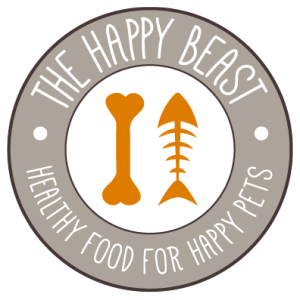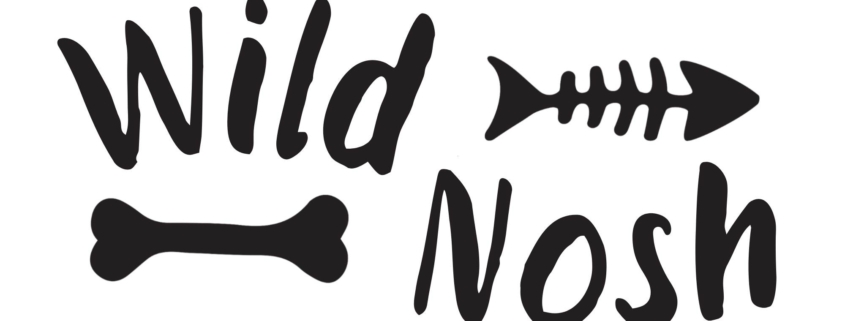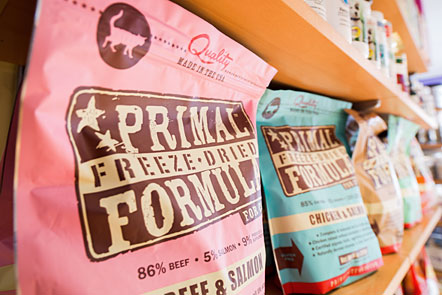Tag Archive for: fresh food
Grain-free pet food is one of the fastest growing areas of the pet food industry. Even major commercial brands such as Purina and Science Diet now have grain-free pet food options for cats and dogs. Due to clever marketing, “grain-free” has become synonymous with premium quality and the assumption is that it is a more biologically-appropriate food for both cats and dogs.
However, it’s important to note that “grain-free pet food” does not mean “zero” carb, or even “low” carb, which is a very important distinction. Carbohydrates are an essential part of the manufacturing process of dry pet food, or kibble. Just like with baking; you have to have a flour source or binder to create kibble; whether it’s wheat, corn, potatoes, peas, etc. It is the nature of kibble and can’t be avoided.
“Grain-free” kibble only means that the carbohydrate binder of choice is something other than grain, such as potatoes, lentils, or peas. Grain-free foods can be equally high in carbohydrates when compared to their grain-based counterparts. For cats, potatoes and peas are just as inappropriate as corn, wheat, or soy.
A cat’s natural diet of rodents, rabbits, insects and birds, is about 2% carbohydrate. Dry cat food is generally 25-35% carbohydrate. Carbohydrates in such excessive percentages contributes to both obesity and diabetes, and therefore no kibble is a biologically appropriate food option for cats.
As a frame of reference, let’s take a look at how many carbs are in some of our most popular foods as well as other foods on the market:
Percentage of Carbohydrates | Sample of Brands
Cat Dry Food (Kibble)
- Orijen dry food: 17%
- Earthborn dry food: 18.5%
- Acana Dry food: 27%
- Taste of the Wild: 27%- 39%
- Blue Buffalo Wilderness: 25-27%
- Science Diet w/d: 30%
- Science Diet t/d: 34.4%
- Hill’s Ideal Balance: 35.3%
Dog Dry Food (Kibble)
- Orijen: 29%
- Earthborn: 29.5%
- Petkind: 29.5%
- Fromm Grain-free: 35%
- Blue Buffalo Wilderness: 30-35%
- Taste of the Wild: 37%-46%
- Kirkland: 45%
- Science Diet w/d: 40.2%
- Science Diet t/d: 51.7%
Carbohydrates are not typically listed on pet food labels, but there is a simple calculation to figure out how many carbs are in your animal’s food. Simply add all of the percentages listed, including protein, fat, fiber, moisture and ash, and subtract the total from 100. Here are a few examples:
EXAMPLE 1: Earthborn Cat Primitive
- Crude protein – min 44%
- Crude fat – min 20%
- Crude fiber – min 3%
- Moisture – max 10%
- Ash – max 4.5%
TOTAL: 81.5%
100% – 81.5% = 18.5% CARBS!!!!
If you are trying to figure out how many carbs are in canned or raw food you must first convert the percentages into dry matter.
EXAMPLE 2: Earthborn Cat can Chicken Catcciatori
- Crude protein – min 10%
- Crude fat – min 2%
- Crude fiber – min 1.5%
- Ash – max 3%
- Moisture – max 82%
Total: 98.5%
Dry matter conversion: Subtract the moisture percentage from 100 percent: 100%-82% moisture = 18% dry matter
100% – 98.5% = 1.5% / 18% = 8.3% carbs
EXAMPLE 3: Small Batch Raw Cat food:
- Crude Protein (min): 15.9%
- Crude Fat (min): 8.9%
- Crude Fiber (max): 0.3%
- Ash (max): 2.9%
- Moisture (max): 71.8%
Total: 99.8%
Dry matter conversion: Subtract the moisture percentage from 100 percent: 100%-71.8% moisture = 28.2% dry matter
100% – 99.8% = 0.2% / 28.2% = 0.71% carbs
In summary, we feel that for a majority of dogs and all cats, protein should be the main source of dietary nutrition and calories. Incorporating less processed and lower carb food options is always encouraged, and there are a wide variety of ways to accomplish this. Feeding canned, raw, freeze-dried, and air-dried meat options are easy to incorporate, highly digestible, and very palatable – even for the pickiest of eaters.
Stop by the store to talk with us about your animal’s diet and history and we’ll help you develop a customized feeding plan to meet your needs.
Sticking to resolutions can be hard, but everything’s easier with a buddy. This year, let’s make New Year’s resolutions for you and your dog! Here are three easy ideas for you and your pup to do together.
- Exercise
You don’t have to join a gym or start training for a marathon. To get started, take your dog for a walk around the block. Getting out for a ten minute walk promotes healthy blood flow, allows you to soak up Vitamin D from the sun and helps boost your mood, altogether protecting his you from stress and disease. Your dog will benefit from the mental stimulation provided by the ever-changing smells in the environment and the relationship-building power of leashed walking. (Read more here!)
- Eat Fresh Food
YOU: Grab a salad for lunch or replace your afternoon sugar snack with an apple.YOUR DOG: Add a little life to your dog’s food! Dogs fed mostly kibble miss out on all the awesome nutrients and enzymes found in fresh foods. Adding a dehydrated food like Sojos or The Honest Kitchen is an easy way to provide the benefits of home cooking without having to do all the work. - Take a Fish Oil Supplement
Omega 3s reduce inflammation, joint pain and promote healthy skin, fur and hair! This one’s easy. Keep your dog’s fish oil next to yours, and when you take two, he takes one (or two if he’s a big guy.) I’ve been giving my dog the awesome Omega 3 supplement from InClover called Glow. She LOVES these little treats, and reminds me to give her one every day.
Happy New Year’s to all you happy beasts and good luck with those resolutions!
Tag Archive for: fresh food
CONTACT US
HOURS
Mon – Fri: 10am – 7pm
Sat: 9am – 6pm
Sun: 10am – 5pm
© The Happy Beast
LOCATION
1230 Etna Dr.
Lafayette, CO 80026
(Get Directions)
Located just off South Boulder Rd. behind Elevations Credit Union and Stan’s Automotive. You can turn onto either Etna or Cimarron and look for the dark blue building.


